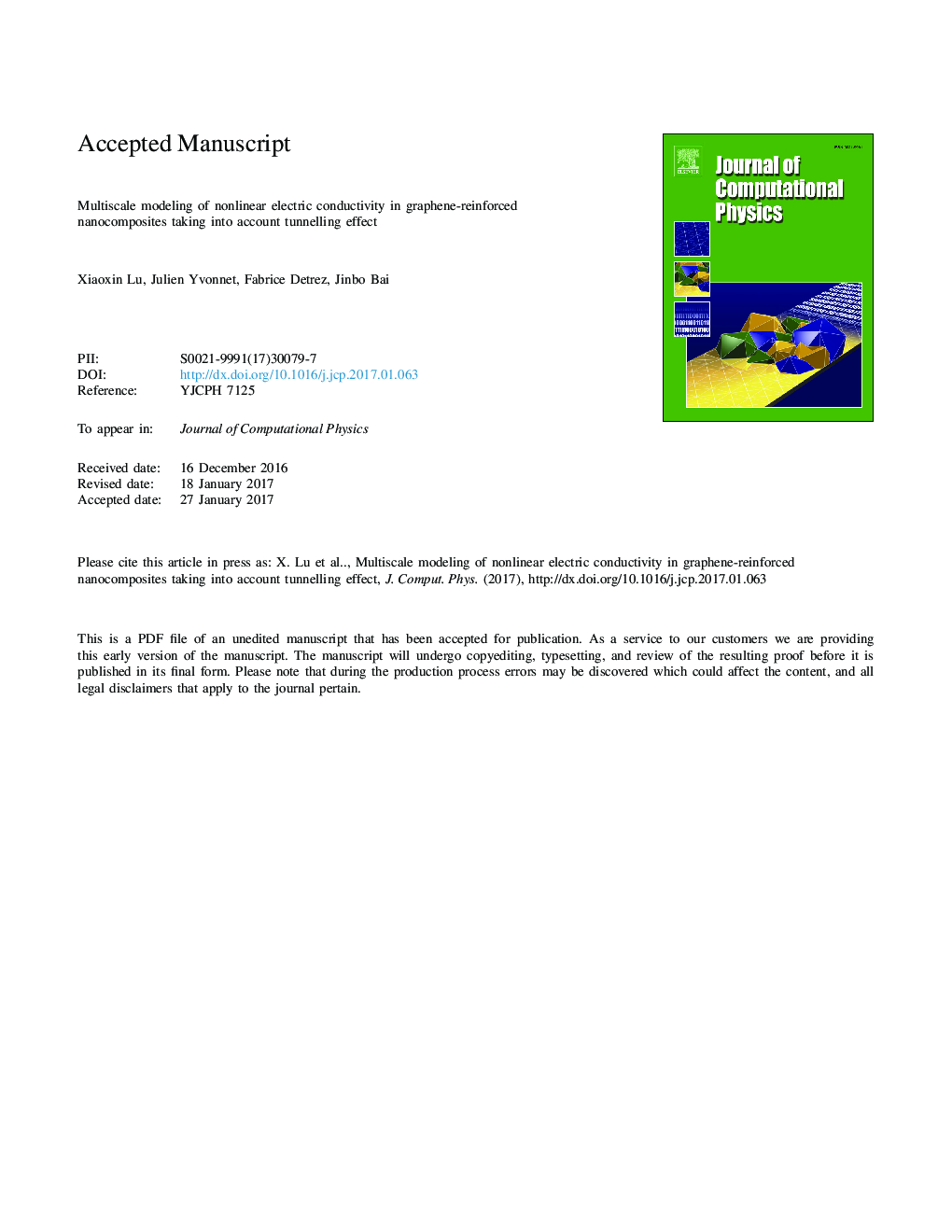| Article ID | Journal | Published Year | Pages | File Type |
|---|---|---|---|---|
| 4967722 | Journal of Computational Physics | 2017 | 31 Pages |
Abstract
Tunnelling effect is a possible mechanism to explain the apparent large electric conductivity and nonlinear electric behavior of graphene-reinforced nanocomposites with polymer matrix. In this work, a numerical modeling framework is proposed to evaluate the effective electric conductivity in polymer composites reinforced with graphene sheets, taking into account the electrical tunnelling effect, which allows conduction between graphene sheets at nanometric distances. We introduce a nonlinear Finite Element formulation and a numerical methodology to model the nonlocal and nonlinear effects introduced by the tunnelling effect conduction model within the polymer matrix between close graphene sheets. In addition, to avoid meshing the thickness of the graphene sheets and in view of their very high aspect ratio, a highly conducting surface model is employed. The computed effective conductivity is evaluated over representative volume elements containing arbitrary distributed graphene sheets. The results exhibit tendencies and percolation thresholds which are in qualitative agreement with the available experimental results.
Keywords
Related Topics
Physical Sciences and Engineering
Computer Science
Computer Science Applications
Authors
Xiaoxin Lu, Julien Yvonnet, Fabrice Detrez, Jinbo Bai,
